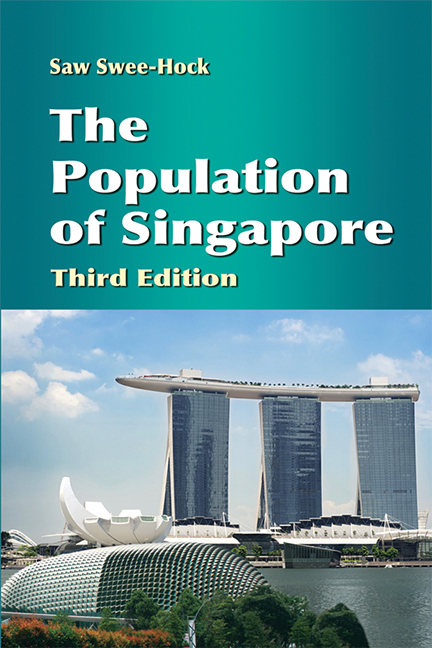Book contents
- Frontmatter
- Contents
- List of Tables
- List of Figures
- Preface
- Preface to Second Edition
- Preface to Third Edition
- 1 Background
- 2 Population Growth and Distribution
- 3 Changing Population Structure
- 4 Migration
- 5 Mortality Trends and Differentials
- 6 Marriage Trends and Patterns
- 7 Divorce Trends and Patterns
- 8 Fertility Trends and Differentials
- 9 Family Planning, Abortion and Sterilisation
- 10 Fertility Policies and Programmes
- 11 Immigration Policies and Programmes
- 12 Labour Force
- 13 Future Population Trends
- Appendix
- Bibliography
- Index
- Frontmatter
- Contents
- List of Tables
- List of Figures
- Preface
- Preface to Second Edition
- Preface to Third Edition
- 1 Background
- 2 Population Growth and Distribution
- 3 Changing Population Structure
- 4 Migration
- 5 Mortality Trends and Differentials
- 6 Marriage Trends and Patterns
- 7 Divorce Trends and Patterns
- 8 Fertility Trends and Differentials
- 9 Family Planning, Abortion and Sterilisation
- 10 Fertility Policies and Programmes
- 11 Immigration Policies and Programmes
- 12 Labour Force
- 13 Future Population Trends
- Appendix
- Bibliography
- Index
Summary
The amount of labour available for the production of goods and services in a country is determined by a variety of demographic, social and economic factors. The size of the total population and its composition with respect to sex and age determine the maximum limit of the number of persons who can participate in economic activities. Other factors such as race composition, the degree of urbanisation and the proportion of married women play an important part in influencing the proportion of the population in certain age groups in the working population.
Among the more important economic and social factors are the industrial structure of the economy, the mode and organisation of production, the per capita income, and the traditional attitudes towards working women and child labour. By and large, demographic factors are the principal determinants of the size of the male working population since by tradition nearly all men are engaged in some form of gainful work from the time they reach adulthood until they approach the retirement age. On the other hand, socio-economic factors seem to exert a greater influence on the size of the female working population.
The labour force of the country is that section of the population which is engaged in the production of goods and services during a particular period. By far the most complete and comprehensive statistics on the labour force are those made available in the regular series of population censuses. By means of these census data, an attempt will be made to examine the growth of the labour force and the participation rates in terms of various socio-demographic factors. Part of the chapter will also be devoted to an appraisal of the industrial and occupational patterns of the labour force which would in a way reflect the manner in which the people of Singapore earn their living.
CONCEPTS AND DEFINITIONS
Labour force statistics can be collected by means of the gainful worker approach or the labour force approach.1 The older gainful worker concept was widely used before World War II and even during the early post-war years in some countries. In Singapore, it was last used in September 1947 when the first post-war census of population was conducted.
- Type
- Chapter
- Information
- The Population of Singapore , pp. 271 - 297Publisher: ISEAS–Yusof Ishak InstitutePrint publication year: 2012



